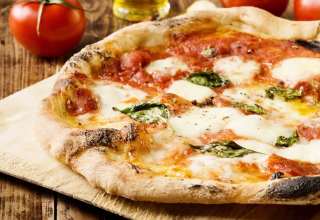Spain’s great wine region is full of iconic architect-designed wineries and wonderful places to stay and eat. Natasha Hughes MW pays a visit
There can’t be a wine lover in the world who hasn’t enjoyed a bottle of Rioja (or two) at some point in their drinking career. Yet, unlike other popular European wine regions –Champagne, Bordeaux and Chianti, for instance – few of us ever get round to visiting this corner of north-western Spain. Rioja just doesn’t appear to be on most people’s travel radar – which means that most of you are missing a trick.
This part of Spain is within easy reach of London. A quick hop southwards takes you to Bilbao, and from there it’s a short drive to one of Europe’s least-visited but most fascinating wine destinations. You’ll catch your first glimpse of the region’s vineyards and walled hilltop towns as you cross the Sierra Cantabria, the mountain range that protects Rioja from rainstorms sweeping in from the Atlantic.
Most people base themselves in Logroño, the region’s capital. It’s convenient, and is famous for its dozens of tapas bars (see Tapas below). Haro is smaller and has more charm; it’s a town whose importance lies not only in the fact that it’s situated in proximity to many of the best vineyards in the region, but also because it played a starring role in Rioja’s rich history.

Wine has been made in this part of Spain since the Roman legions marched in. It wasn’t until the Middle Ages that news of the region’s wines rippled outwards, though, thanks to the thousands of pilgrims who passed through on their way to the holy site of Santiago de Compostela. But in order to really make it big, the Riojanos had to wait until disaster struck in France. Towards the latter half of the 19th century, a tiny American louse, Phylloxera vastatrix, was working its way through France’s vineyards, leaving a trail of devastation in its wake. Having surveyed the ruins of their vineyards, many of Bordeaux’s winemakers packed their bags – and their oak barrels – and travelled south in search of somewhere else to make their high-quality wines. More than a few of them settled in Haro, which became the epicentre of a new wave of winemaking.
The arrival of these immigrants transformed winemaking in the region: they build posh wineries and aged their wines in oak, a technique that became a hallmark of Rioja’s wines. A number of these wineries are now, over a century later, widely acknowledged to be among Rioja’s best. As a result, this is a great place for visits – all of which can be done on foot.
Wineries to visit
La Rioja Alta was founded in 1890, specialises in red wines, all based on the Tempranillo grape. This thoroughbred grape forms the basis of all of Rioja’s red wines – whether oak-aged, in which case it creates wines with a velvety texture and rich, smoky flavours, or bottled young to make wines with a bright, juicy red berry fruit character. Here at Rioja Alta, the house style favours elegant restraint. Visitor tours last up to a couple of hours, and include a tutored tasting of three wines, although you can just opt to drop in and taste through the range by yourself.
The next stop – López de Heredia – is just across the road from Rioja Alta. It’s instantly recognisable, thanks to its glass-fronted tasting room, designed by architect Zaha Hadid to resemble a tilted decanter. This ultra-modern space is an interesting place to showcase wines that are among the most traditional made in Rioja. Reds, whites and rosés are aged for longer than is fashionable these days to create complex, food-friendly wines with layered aromas. Visits here are by appointment only, but include a tour of the cellars and a tasting of wines from the small but perfectly formed range.

A brief stroll takes you to another of Haro’s gems, CVNE (which stands for Compañia Vinicola del Norte del España, is often spelt Cune and pronounced “koo-nay”). Founded in 1879, CVNE is always worth a visit, not least for the garden full of Anthony Caro sculptures that surround the winery. Of all Rioja’s wineries, CVNE is the one that offers the fullest range of experiences to the visitor, from tasting courses to children’s play workshops (keeping the little ones busy while you enjoy your tour in tranquillity). Should the fancy strike you, you can even book yourself in for lunch, accompanied – inevitably – by a selection of CVNE’s vibrant, characterful wines. But the real star of the show is the tour of the cellars themselves, some of which were designed by Alexandre Gustave Eiffel (yes, that Eiffel).

It’s worth noting that CVNE actually owns three wineries in Rioja, and it would be a shame to miss out on a visit to the charming bodega dedicated exclusively to producing wines under the Contino label. Located in Rioja Alavesa, the small corner of Rioja that is officially part of Basque country, Contino’s 62 hectares are mainly dedicated to the production of red wines. The point of difference here is that as well as the usual Reservas and Gran Reservas, Contino bottles single-variety wines made from grapes that are usually subsumed into Rioja’s Tempranillo-dominated blends. You’ll get the opportunity to sample Graciano, a cherry-scented grape that’s high in both acidity and tannin, as well as fruity, spicy Garnacha.
The last must-visit bodega on your list should be Remelluri, which is situated in a beautiful but remote corner of Rioja’s highlands. One of Spain’s most acclaimed winemakers, Telmo Rodriguez, makes beautifully crafted wines here, with a focus on revealing the true nature of the vineyards’ soils and microclimates. He achieves this, in part, by ageing his wines in older barrels than is typical in the region, and the result is the creation of polished, precise wines. Rodriguez’s reds rock, big time, but whatever you do, don’t miss out on a chance to taste the Remelluri white, a wine that has a cult following among connoisseurs.
Bodegas Baigorri and Ysios
And if you have time, you should at least drive past such landmarks as the extraordinary Ysios in Laguardia, designed by Santiago Calatrava to echo the jagged peaks of the mountains behind, and Bodegas Baigorri, built into the side of the hill at Samaniego and topped by a futuristic glass box.

Places to stay and eat
Hotel Los Agustinos, a historic building that has, over the centuries, been used as a convent, a prison and a hospital is – by a long shot – the best place to stay in Haro. Ask for one of the rooms facing out onto the old cloisters – they’re large and very comfortable, if a little old-fashioned in their decor.
Rioja’s landmark hotel is, arguably, the one situated in the middle of the Marques de Riscal vineyards. Frank Gehry’s extraordinary building, with its sinuous titanium roof, is gorgeous. The rooms are comfortably luxurious, and all offer views out over the surrounding countryside. The in-house restaurant, the Marques de Riscal is widely acknowledged as being one of the best in the area, especially if you’re in the mood for a full-on multi-course tasting extravaganza.

If your tastes run to something a little simpler, Terete is renowned for the quality of its roast lamb (a local speciality), but also does a good range of tortillas and charcuterie, including Riojan chorizo.
Somewhere in between the two extremes lies the slick, modern Casa Toni, whose menu takes traditional local ingredients and gives them a contemporary spin. The extensive wine list offers plenty of local choice, too.
Where to find the best tapas
Finally, a tapas crawl is a quintessentially Spanish evening, and one of the best places to do it is in Logroño’s Calle Laurel and its side-streets. Haro has its own tapas circuit, the Herradura (the Horseshoe), but in Logroño the bars and restaurants stand shoulder-to-shoulder. On a Saturday night the narrow streets of this old part of town are packed, with locals as well as tourists. Each bar has its speciality, from empanadas (savoury tarts), setas (wild mushrooms fried in garlic butter), orejas (pigs’ ears), pimientos (sweet peppers), txangurrito (crab and seafood fishcake), cheeses, delicious hams and much more. All washed down with glass after glass of Rioja…








